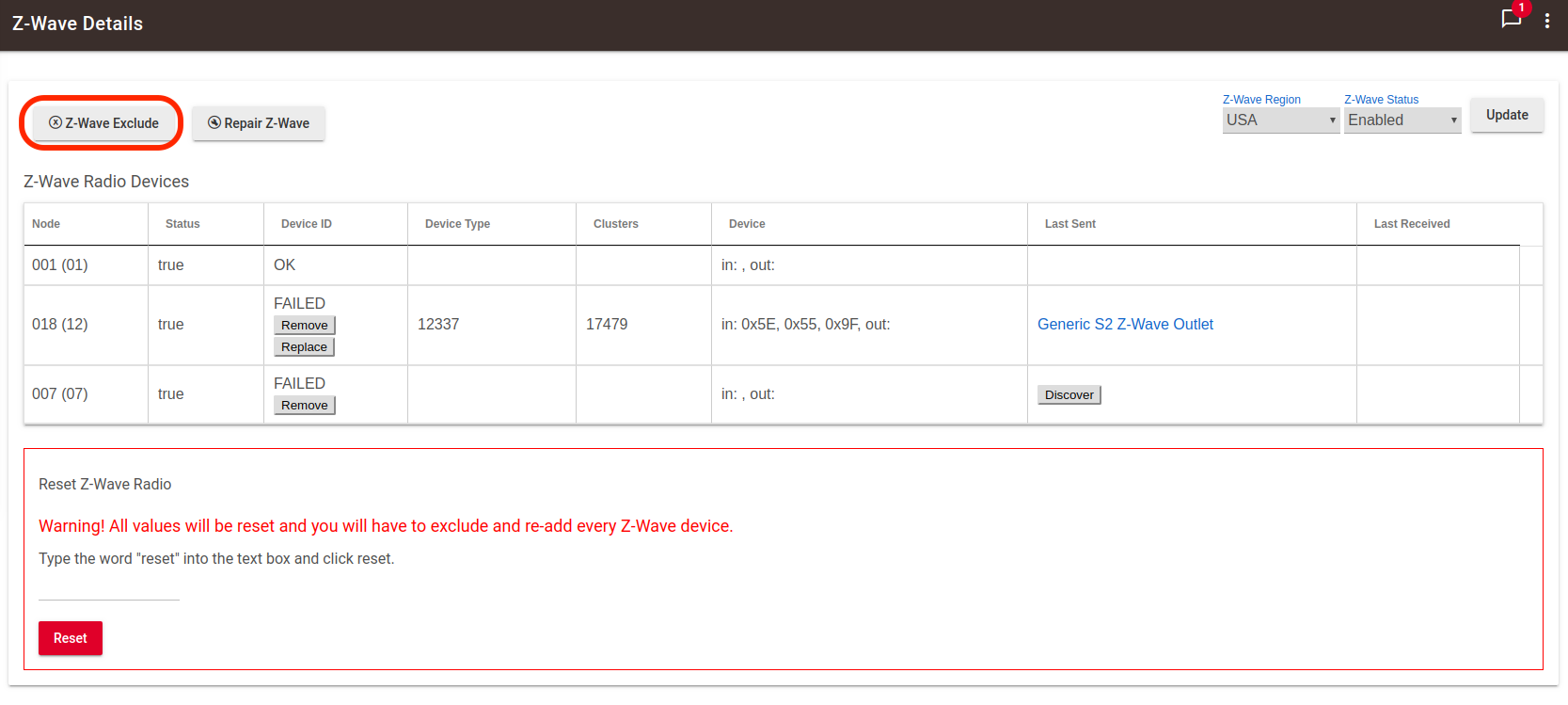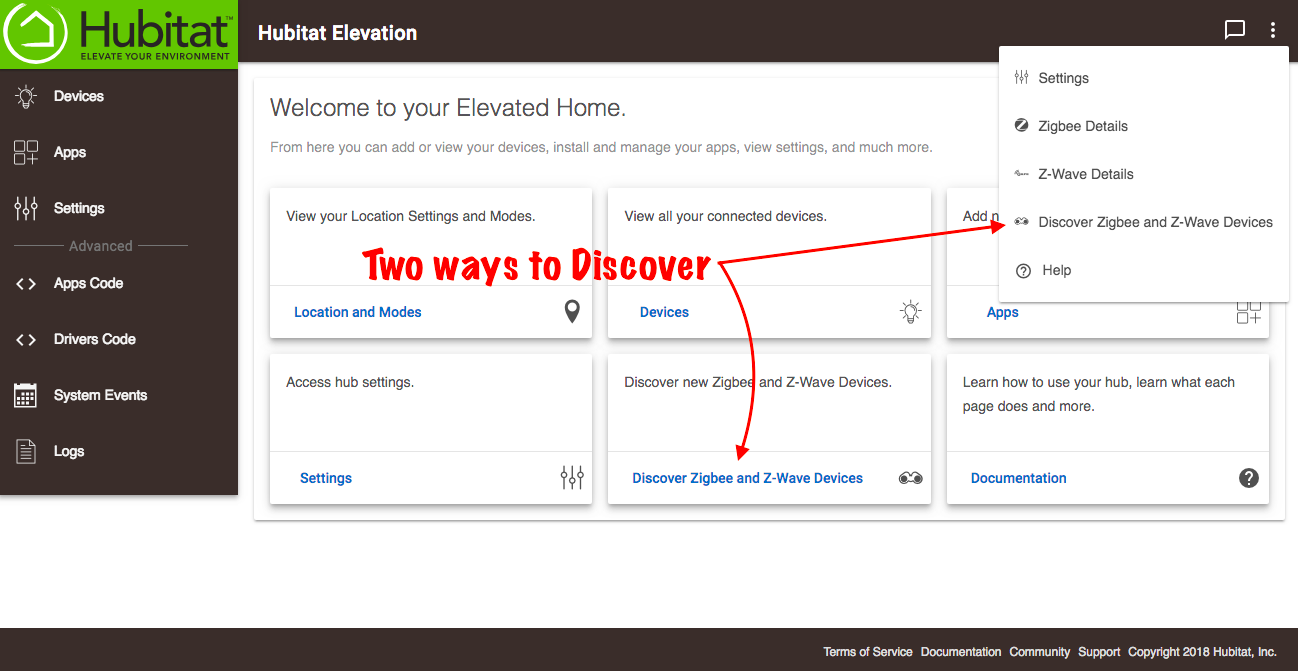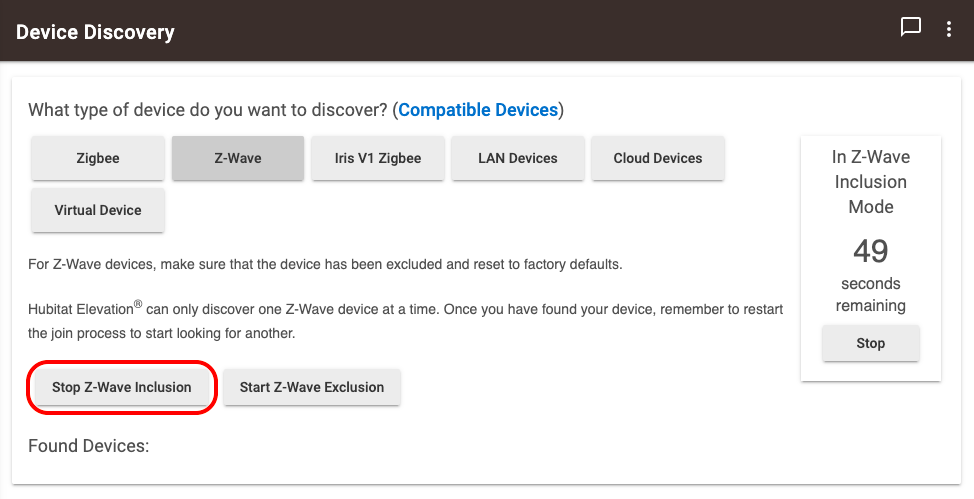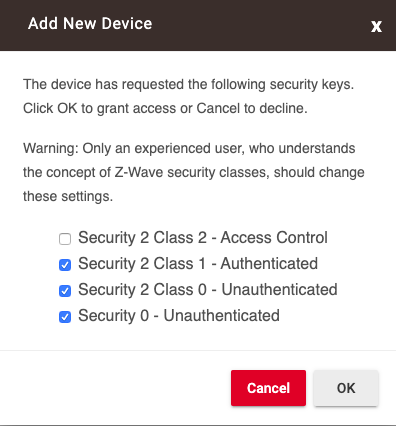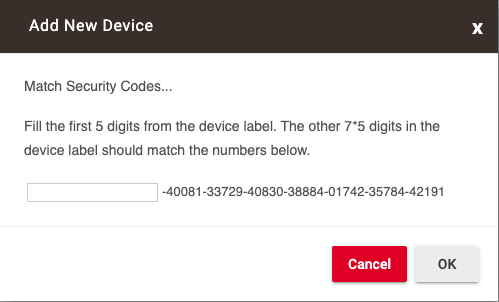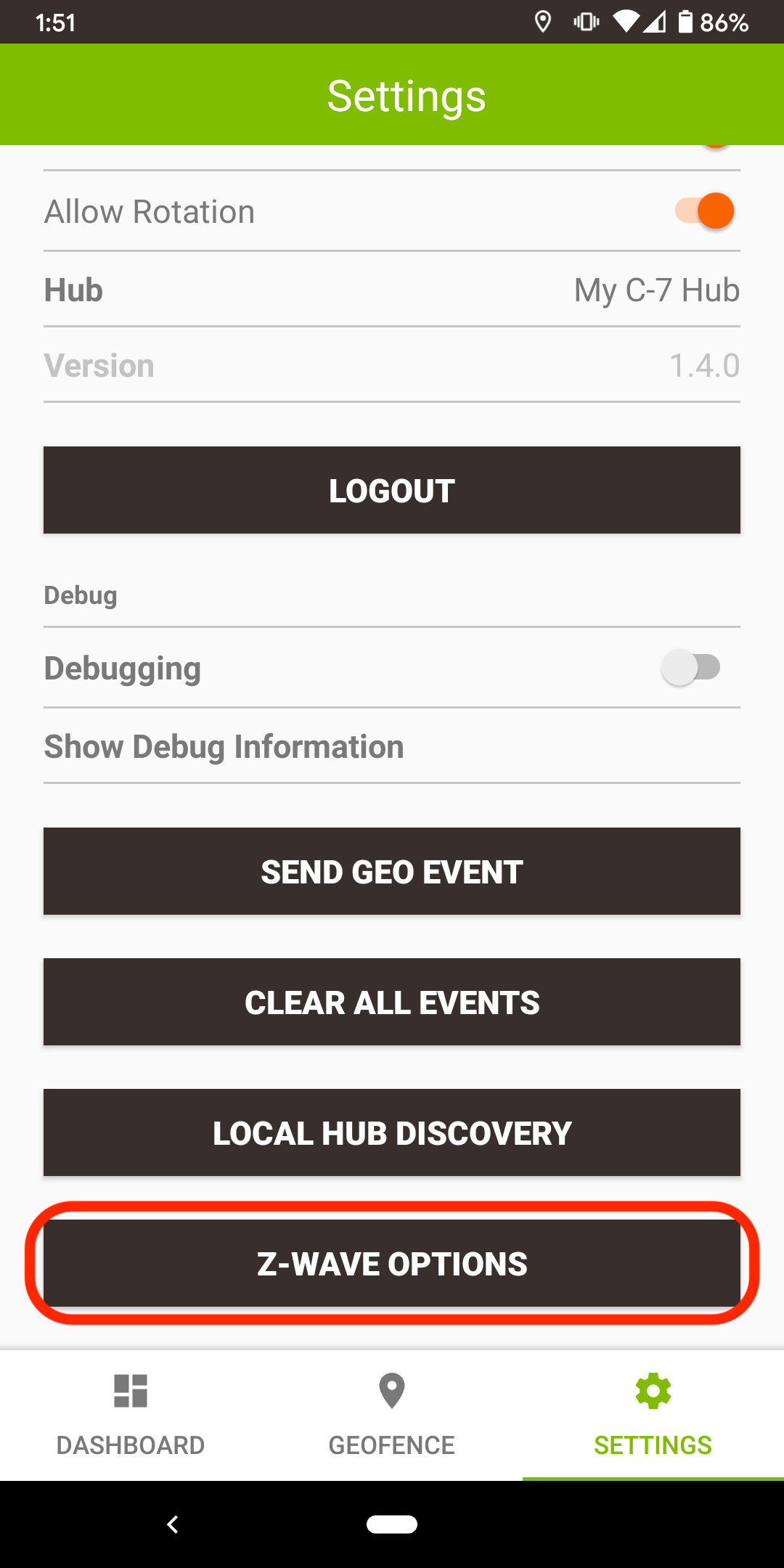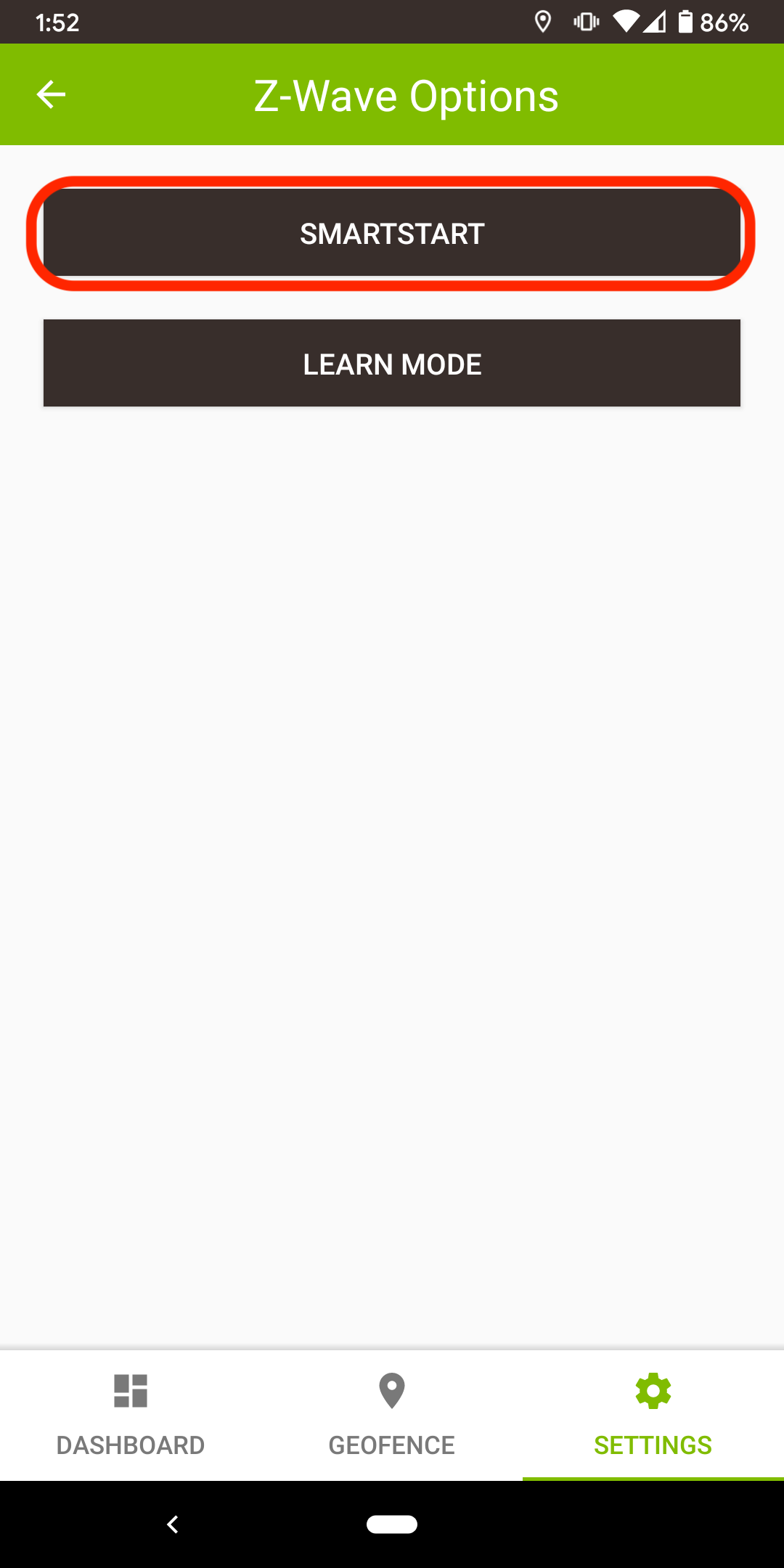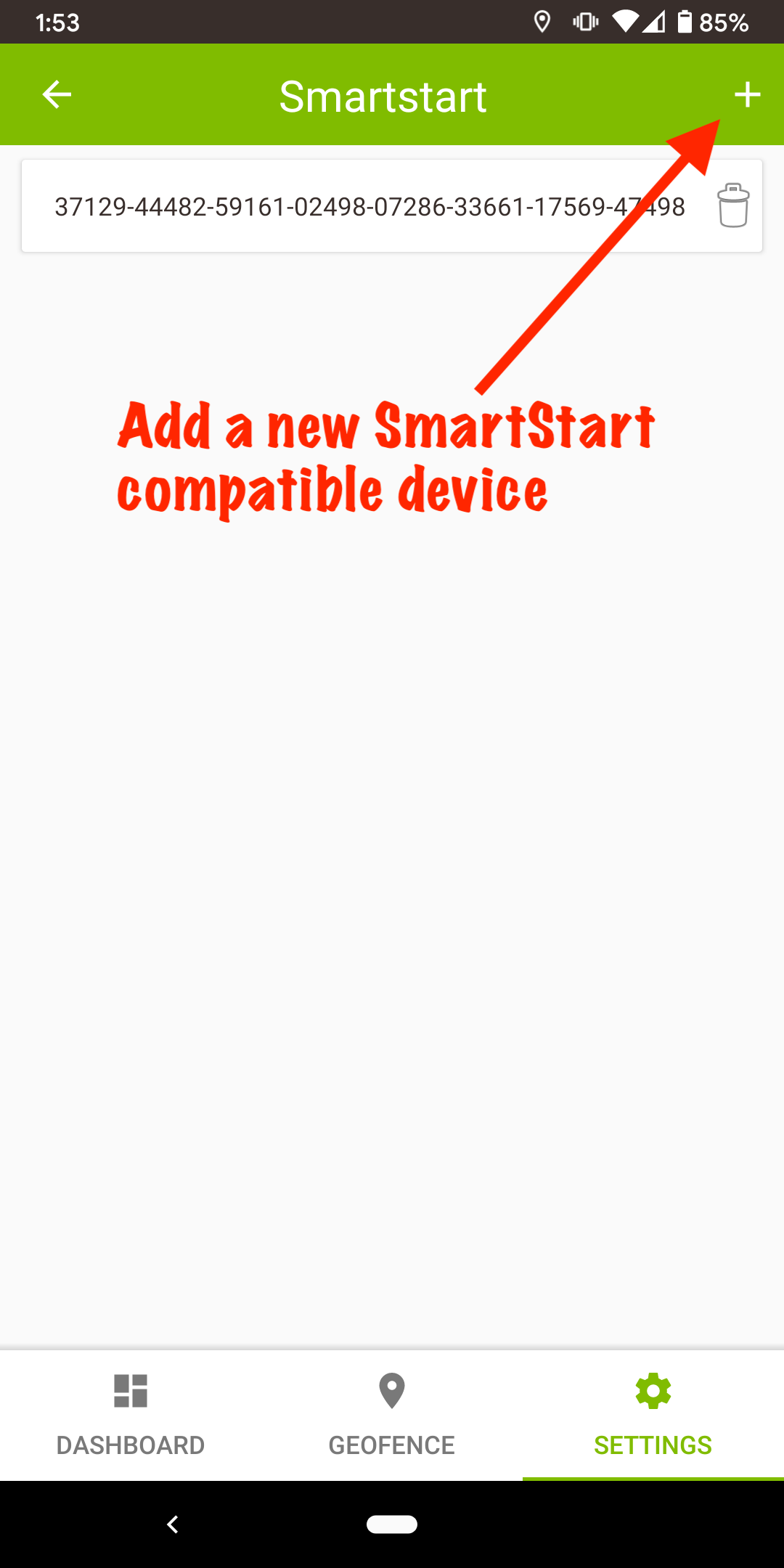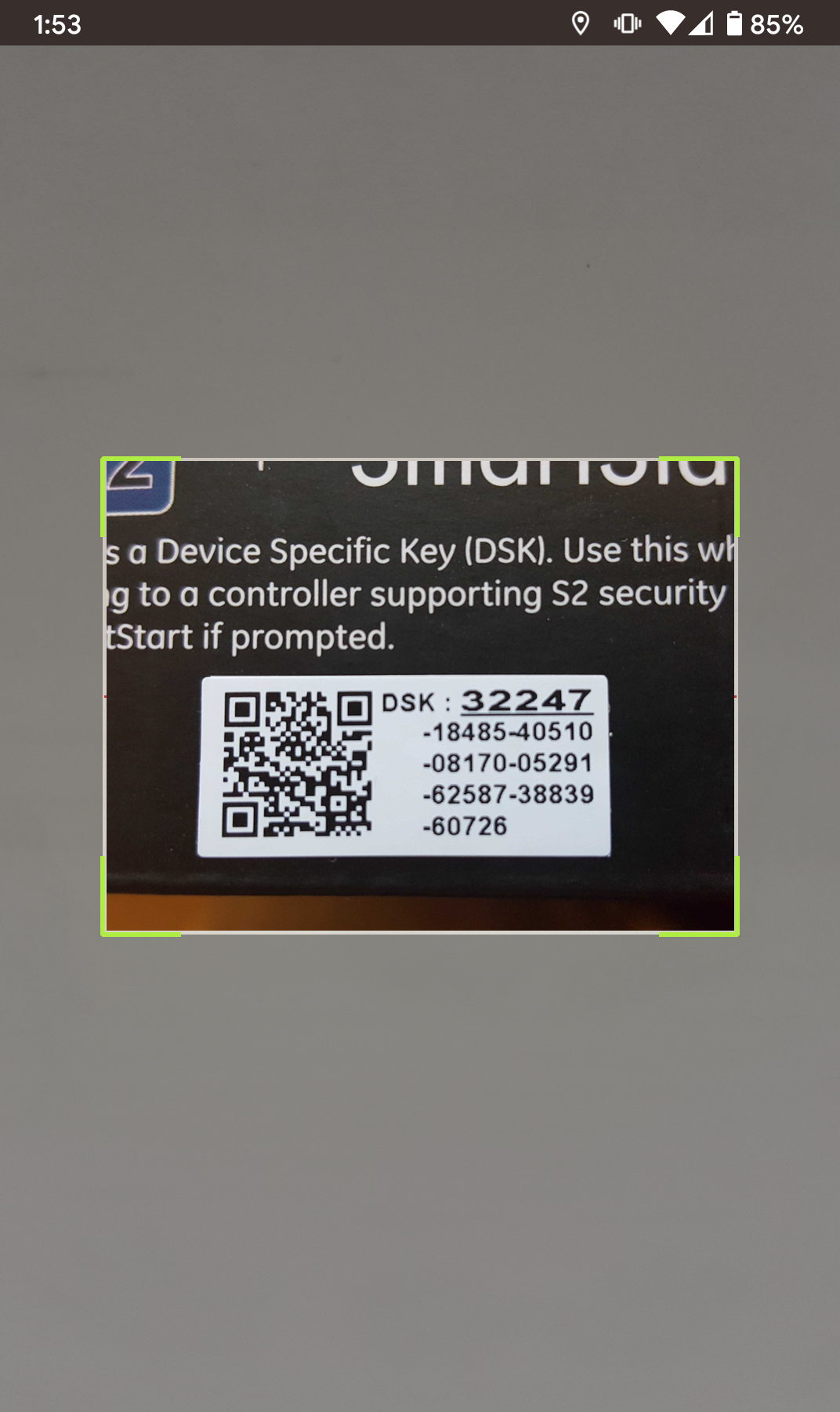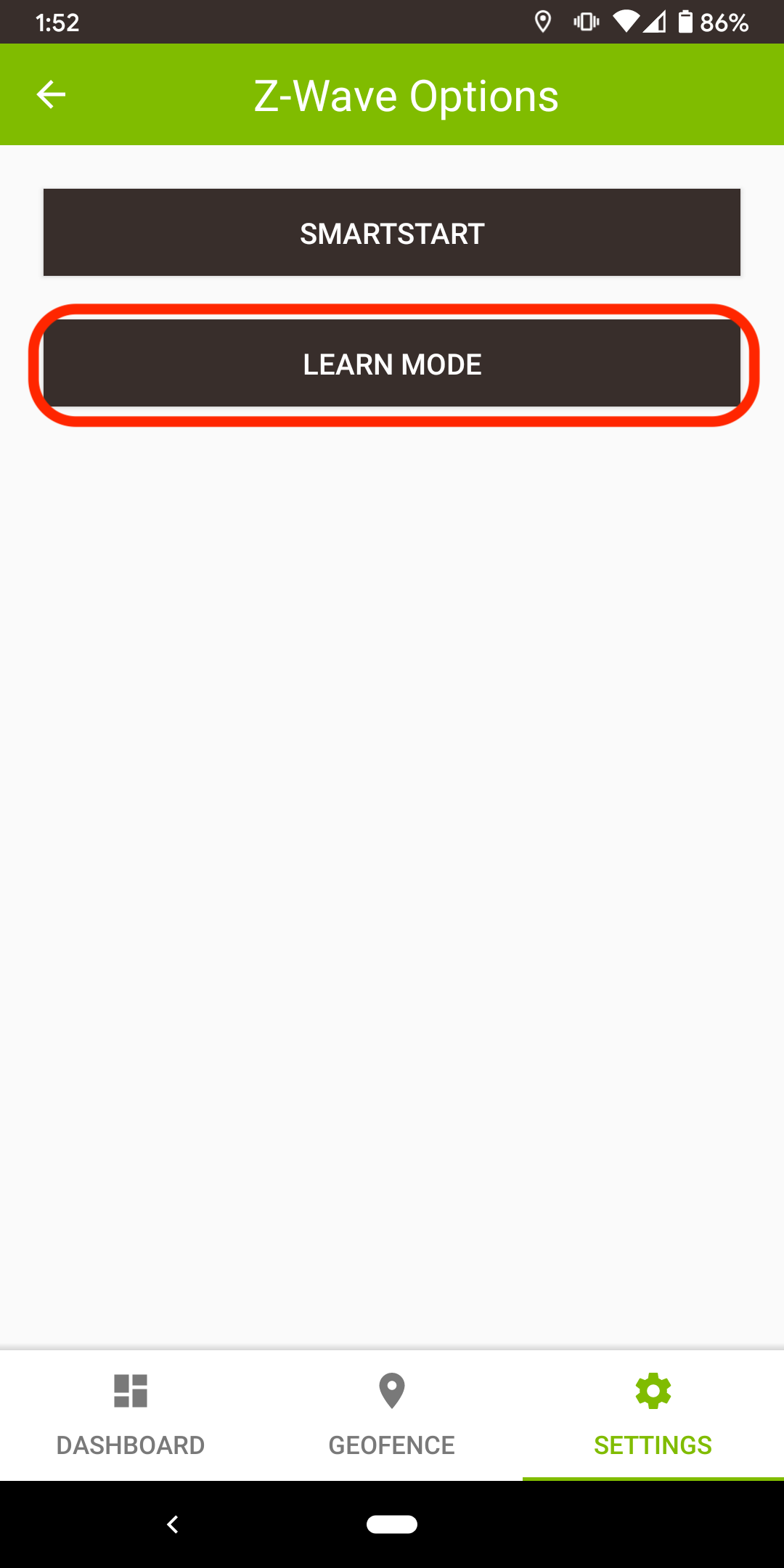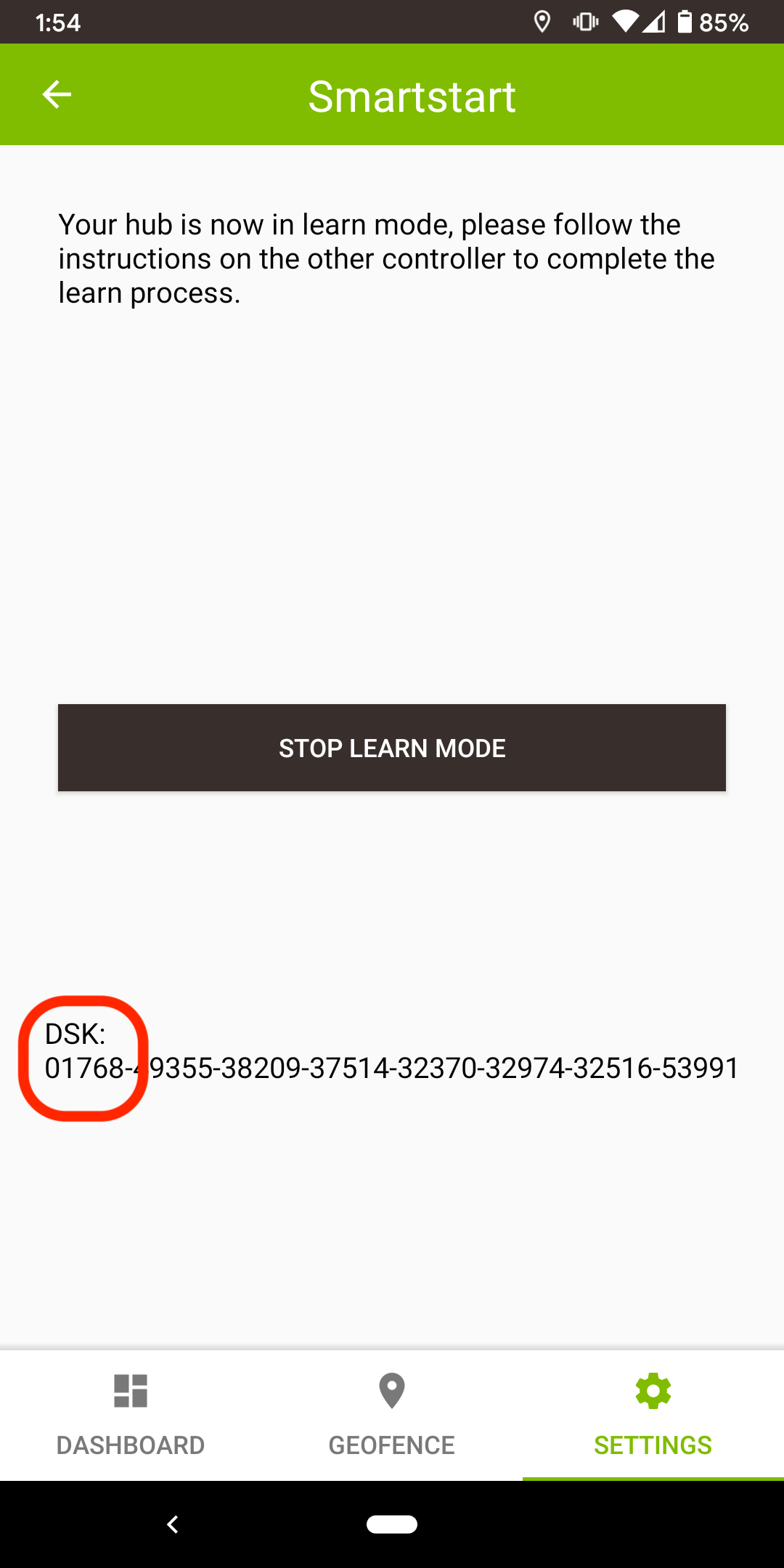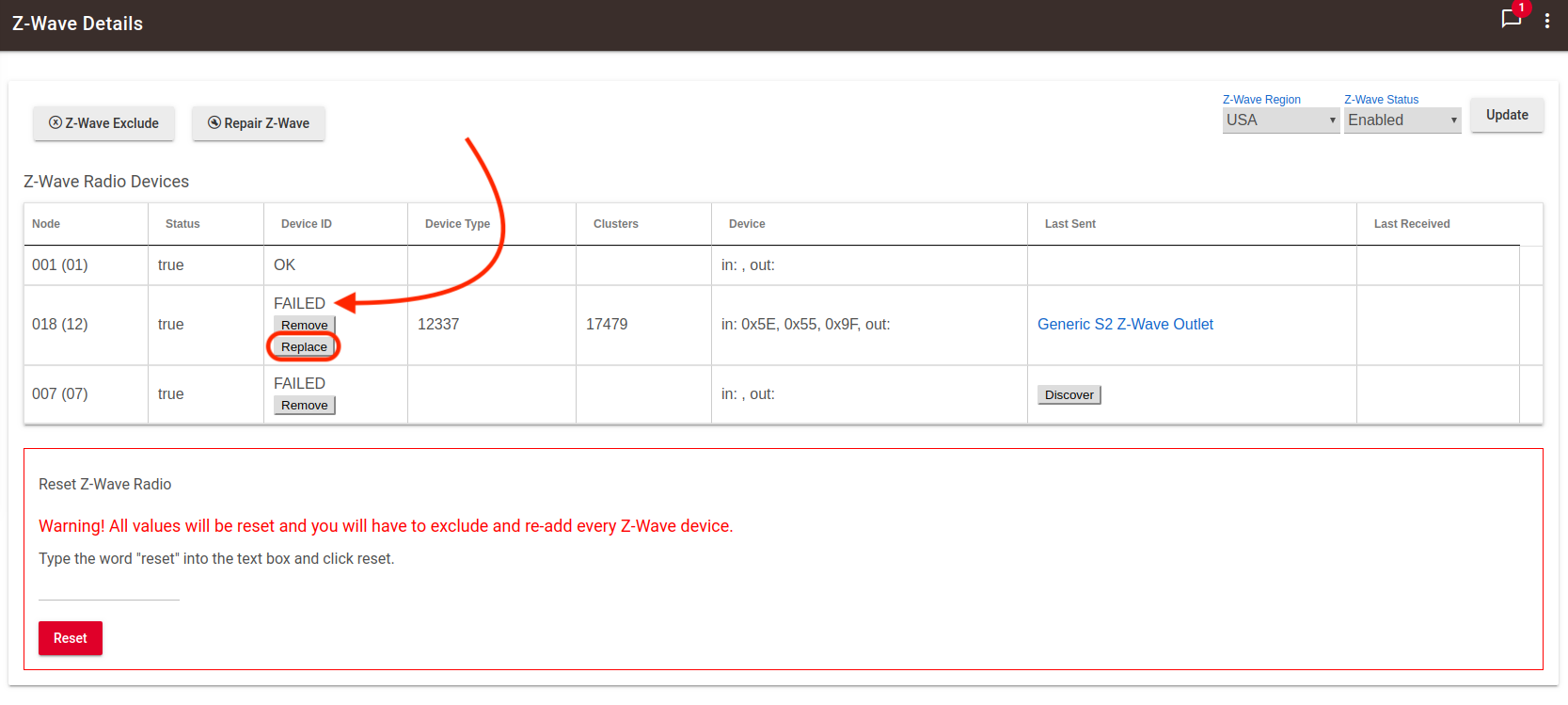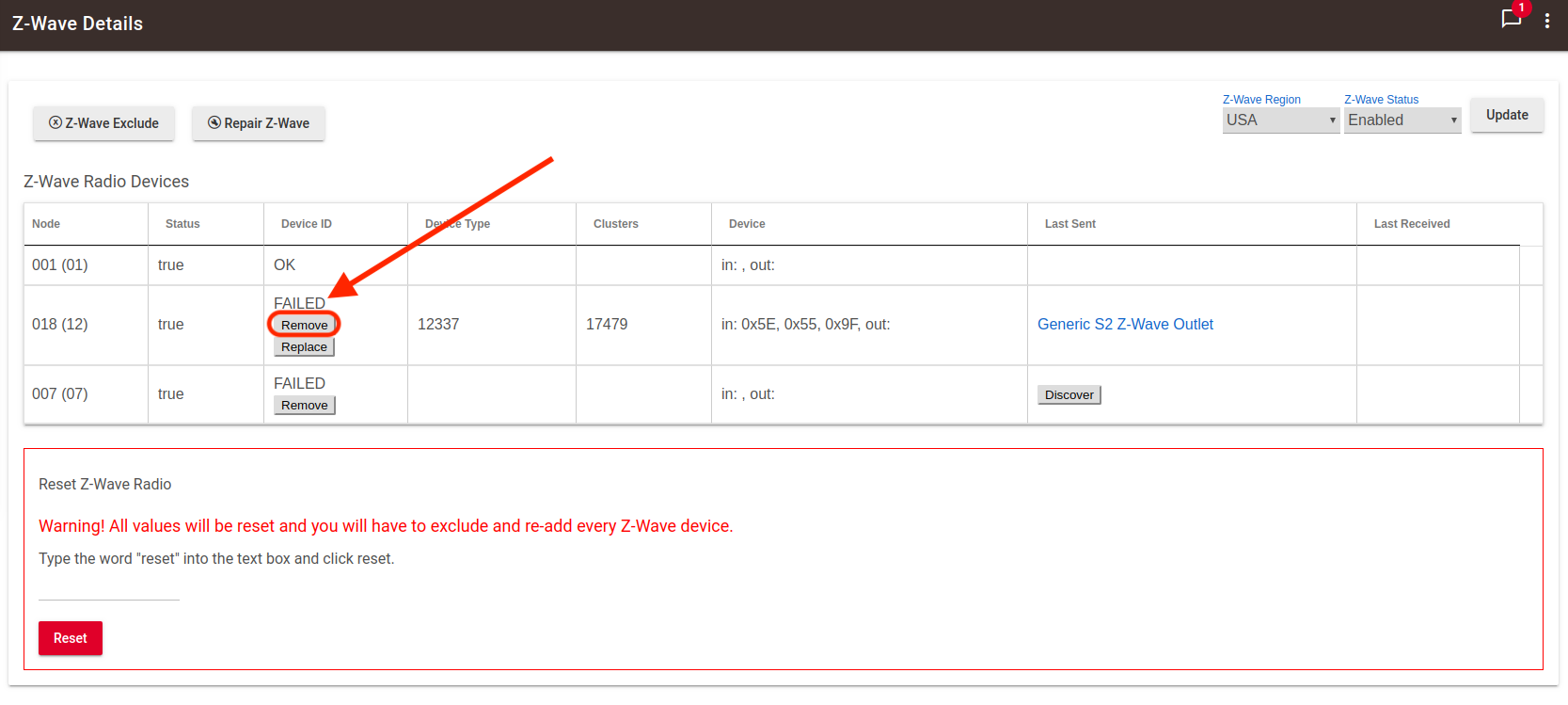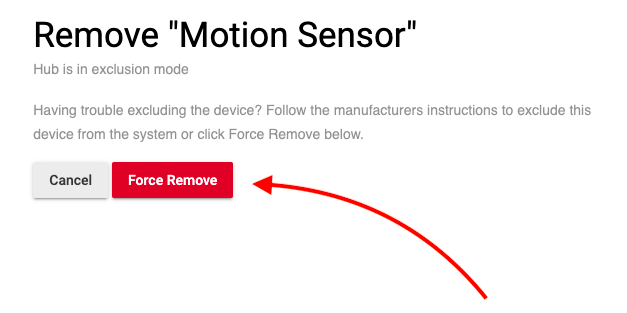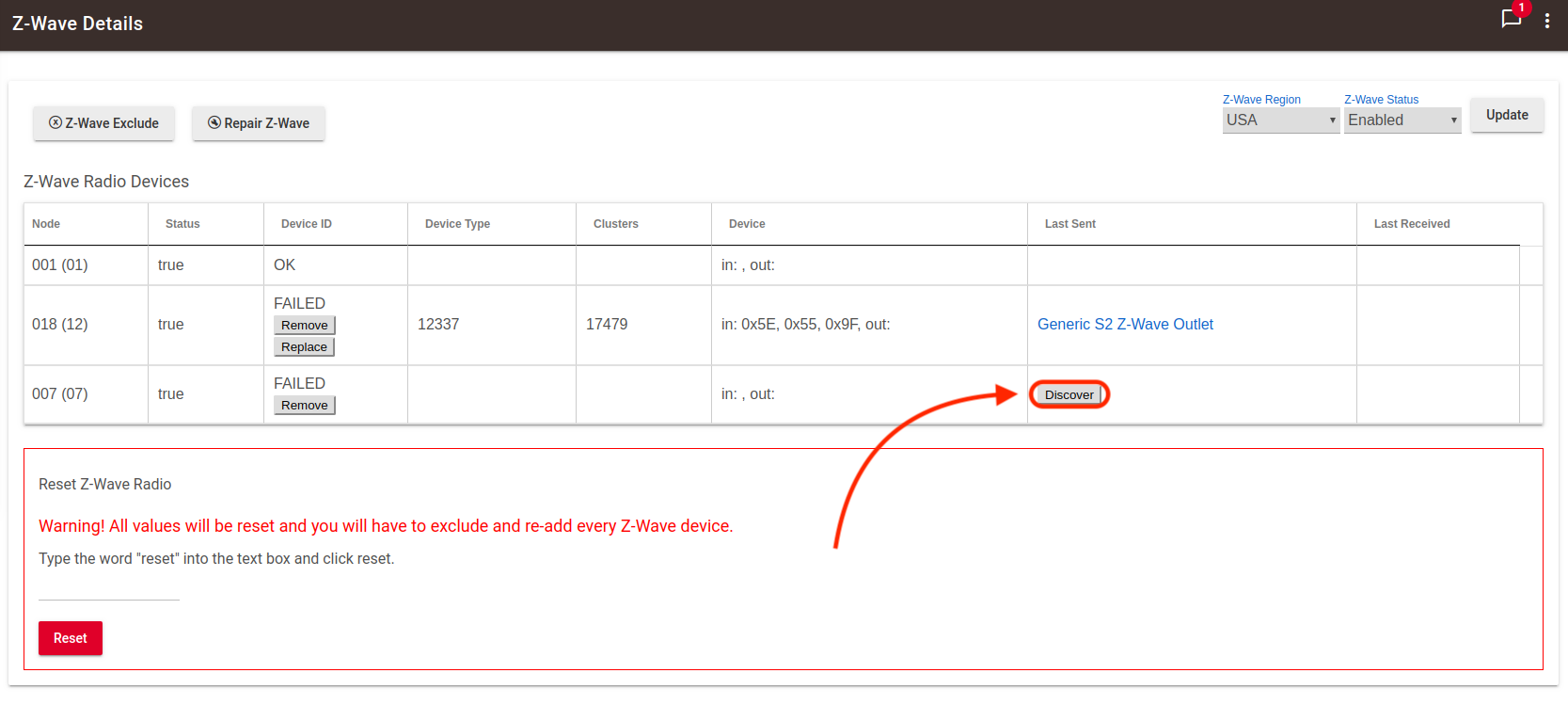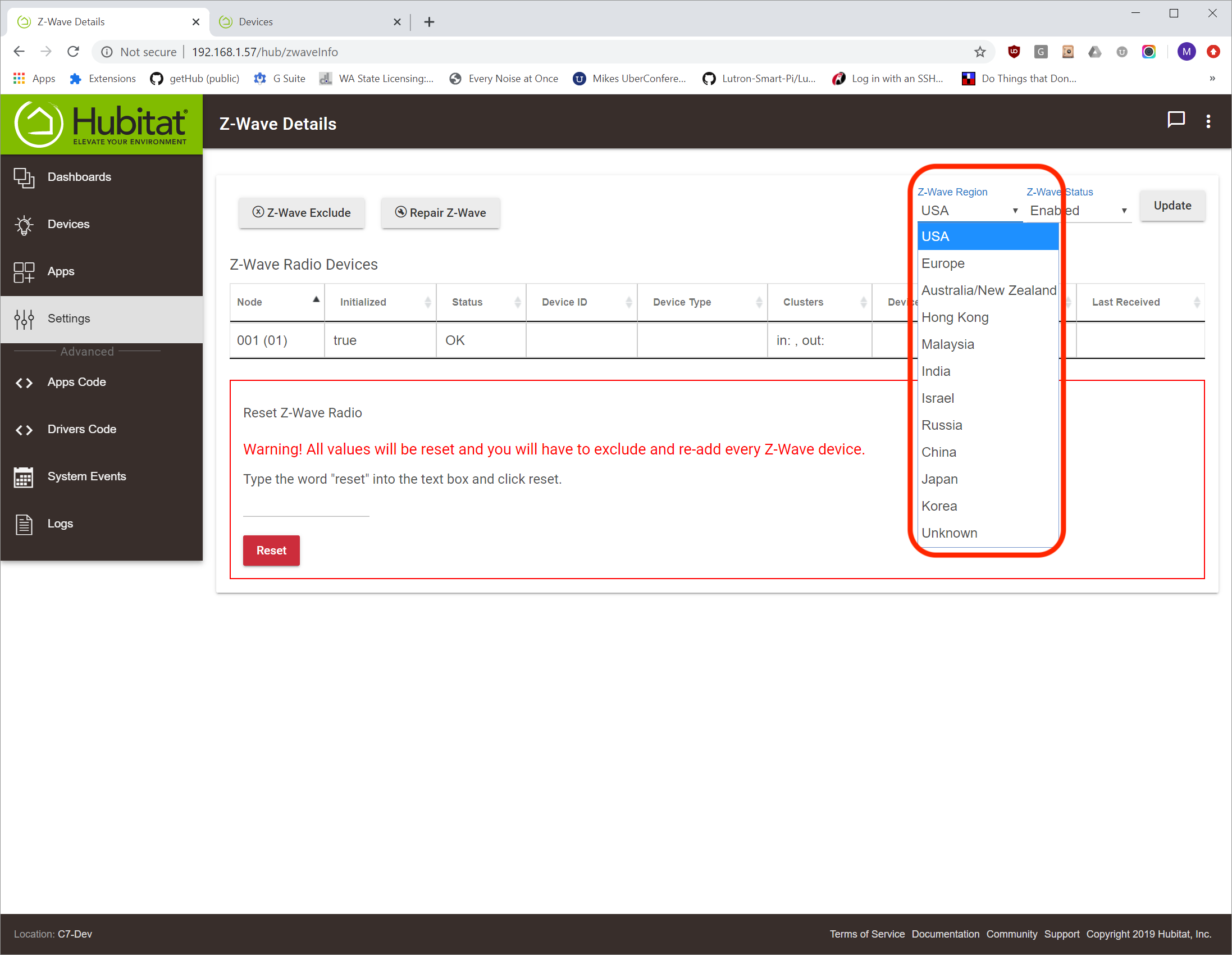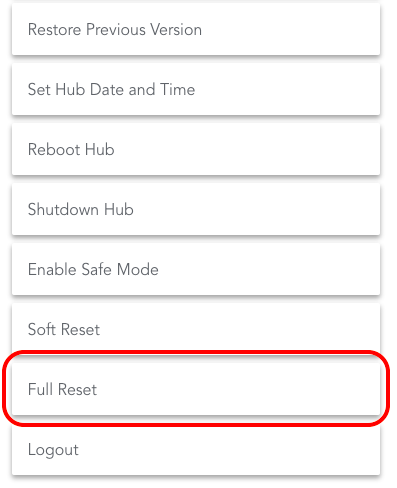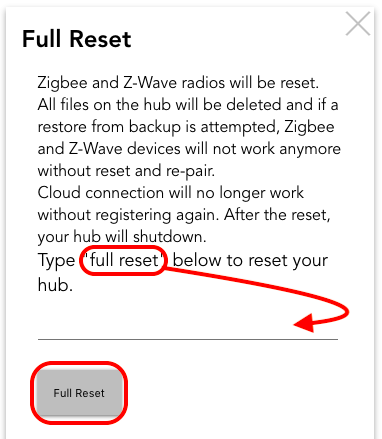Z-Wave Manual
Hubitat Elevation™ is a Z-Wave Plus central static controller which may be included in any Z-Wave network to operate Z-Wave certified devices from other manufacturers in your home. Regardless of vendor, all AC mains powered nodes within the network will act as repeaters to increase reliability of the network.
A Z-Wave repeating device is a non-battery-operated Z-Wave device within the network. Battery powered Z-Wave devices do not repeat signals and are referred to as end devices, whereas Z-Wave repeating devices are referred to as routers. When a security-enabled Z-Wave device is added to the Hubitat Elevation™ network, its communication will utilize 128-bit AES secure encryption.
About Z-Wave technology
The Z-Wave protocol is a low powered wireless interoperable RF communications technology designed specifically for control, monitoring and status of residential and light commercial Internet of Things devices. It supports full mesh networking and may be used with or without a coordinator node (Hub). Z-Wave operates in the sub-1GHz band and is impervious to interference from Wi-Fi and other wireless technologies in the 2.4 GHz range such as Bluetooth® and ZigBee. For a more information about Z-Wave technology, please visit www.z-wave.com
Remove a Z-Wave device from the network
Prior to adding devices to the Z-Wave network of your hub, it is required that you first Exclude the device from any previous networks it has joined. This may be accomplished by performing a Z-Wave Exclude to remove the device from the Z-Wave network of the controller it formerly joined. However, it is not required that you perform this step using the previous controller. If the previous controller is unavailable or it is not convenient to perform Z-Wave Exclusion using the former controller, a General Exclusion may be performed from the Hubitat Elevation™ hub.
Z-Wave General Exclusion - Remove devices from a previous hub connection
- Choose the Z-Wave Details button from your Hubitat Web Interface home page, or from the kabob menu at the top right. File:Z-Wave Details.png600x600px
- Select the Z-Wave Exclude button.
- Hubitat Elevation™ will enter Z-Wave Exclude mode for 30 seconds. A green banner at the top of the page will indicate that exclusion mode has been initiated.
- Place your device into Z-Wave Exclusion mode. This is typically the same procedure used to place your device into Z-Wave Inclusion mode in order to join the Z-Wave network. Refer to the Hubitat Elevation™ Join and Reset Instructions page, or your original device manufacturer instructions for further detail.
- Upon successful exclusion, the Hubitat Elevation™ hub will display the message "Unknown Z-Wave device successfully excluded".
Z-Wave Exclusion - Remove devices from your Hubitat Elevation™ hub
- Choose the Discover Devices button on your Hubitat Web Interface home page, or from the kabob menu at the top right.
- Select the Z-Wave button.
- Press the Start Z-Wave Exclusion button.
- The Hubitat Elevation™ hub will enter Z-Wave Exclude mode for 30 seconds.
- Place your device into Z-Wave Exclusion mode. This is typically the same procedure used to place your device into Z-Wave Inclusion mode in order to join the Z-Wave network. Refer to the Hubitat Elevation™ Join and Reset Instructions page, or your original device manufacturer instructions for further detail.
- Upon successful exclusion, the Hubitat Elevation™ hub will display the message "Z-Wave device [Device Name] excluded and removed".
Add a Z-Wave device to the network
Z-Wave Inclusion - Add devices to your Hubitat Elevation™ hub
- Choose the Discover Devices button on your Hubitat Web Interface home page, or from the kabob menu at the top right.
- Select the Z-Wave button.
- Press the Start Z-Wave Inclusion button.
- Place your device into Z-Wave Inclusion mode. This is typically the same procedure used to place your device into Z-Wave Exclusion mode in order to leave the Z-Wave network. Refer to the Hubitat Elevation™ Join and Reset Instructions page, or your original device manufacturer instructions for further detail.
- Z-Wave S2 capable devices that are added using this Classic Inclusion method will prompt for security keys to be used. NOTE: Although the user can force non-secure inclusion for some Z-Wave S2 capable devices, access control devices will always reject non-secure inclusion methods.
- When adding S2 devices with authentication, enter the first 5 digit segment of the DSK (Device Specific Key) into the dialogue box that appears and press OK. NOTE: After entering the DSK, it may take up to 1 minute for the inclusion process to finish.
- Upon successful device inclusion, the Hubitat Web Interface will display the nodeId, Manufacturer, Product Name, Model Number and deviceTypeid. Selecting the more... link below deviceTypeId in the Hubitat Web Interface will display the available inClusters and outClusters.
Z-Wave SmartStart - Add Z-Wave Plus SmartStart compatible devices to the hub
SmartStart compatible Z-Wave products, regardless of brand or type, can easily be added to the hub, by simply scanning a QR code on the SmartStart compatible device. The devices will be automatically included in the Z-Wave Plus network and the connection is secure encrypted with Z-Wave S2 security framework.
- Using the Hubitat Elevation™ mobile app, navigate to Settings and press the Z-Wave Options button.
- Tap the SmartStart button.
- Tap the + icon to start scanning of the QR code. NOTE: If this is the first time you have used the Hubitat Elevation™ app on your mobile device, you will be prompted to allow access to the mobile device camera.
- Scan the device QR code.
- Pull the battery tab, or remove and replace the device battery to initiate automatic joining to the Hubitat Elevation™ hub.
Copy Z-Wave network information
Z-Wave Replication - Copy network information from the Hubitat Elevation™ hub to a secondary Z-Wave controller
- Choose the Discover Devices button on your Hubitat Web Interface home page, or from the kabob menu at the top right.
- Select the Z-Wave button.
- Press the Start Z-Wave Inclusion button.
- Enable Learn Mode on the hub that will be the Z-Wave secondary controller.
- When successfully added, network information from the Hubitat Elevation™ hub will be replicated on the secondary controller.
- The Hubitat Web Interface will display the nodeId, Manufacturer, Product Name, Model Number and deviceTypeid. Selecting the more... link below deviceTypeId in the Hubitat Web Interface will display the available inClusters and outClusters.
Repair Z-Wave
Each Z-Wave device builds a neighbor table to keep track of which router devices are its closest neighbors. When you initiate the Repair Z-Wave function, you are instructing each Z-Wave device on the network to re-establish which routing devices are its closest neighbors, and therefor the most efficient route back to the hub. This also tells each device to forget about router devices that no longer exist on the Z-Wave network, or are now out of range and no longer able to be used for routing.
Z-Wave Repair - Rebuilding the Z-Wave Routing Tables
- Choose the Z-Wave Details button from your Hubitat Web Interface home page, or from the kabob menu at the top right. File:Z-Wave Details.png600x600px
- Select the Repair Z-Wave button.
Z-Wave Learn Mode
Z-Wave Plus S2 Learn Mode - Receive network information from another Z-Wave Plus S2 compatible controller
- Start by enabling Z-Wave Inclusion mode on the Z-Wave Plus S2 primary controller, so devices may be added its network.
- Using the Hubitat Elevation™ mobile app, navigate to Settings and press the Z-Wave Options button.
- Tap the Learn Mode button, then Start Learn Mode.
- Leave all security modes enabled on the primary Z-Wave Plus S2 controller.
- The primary controller will prompt the user for the first segment of the DSK (Device Specific Key) from the Hubitat Elevation™ mobile app.
- Enter the first 6 digit segment shown in the mobile app, into the primary controllers user interface when prompted.
- When successfully added, network information from the primary controller will be replicated on the Hubitat Elevation™ hub.
Z-Wave Learn Mode (for non-S2 capable Z-Wave radios) - Receive network information from another Z-Wave controller which does not support S2 secure encryption
- Start by enabling Z-Wave Inclusion to add devices to the network of the Z-Wave primary controller.
- Using the Hubitat Elevation™ mobile app, navigate to the Settings and press the Z-Wave Options button.
- Tap the Learn Mode button, then Start Learn Mode.
- The primary controller should indicate a device has joined its Z-Wave network.
- When successfully added, network information from the primary controller will be replicated on the Hubitat Elevation™ hub.
Replace a failed Z-Wave node
If a device becomes unresponsive or is no longer available, the Hubitat Elevation™ hub has advanced user functions to Replace, or Remove the failed node.
Z-Wave Capability Rediscovery - Replacing a failed node on the network
- Choose the Z-Wave Details button from your Hubitat Web Interface home page, or from the kabob menu at the top right.File:Z-Wave Details.png600x600px
- If the device is marked FAILED in the Device ID column of the Z-Wave Radio Details page, a Replace button will be available. Selecting this button will initiate Inclusion Mode so the user may add a new device or the previously joined device. It will be joined to the Hubitat Elevation™ hub with the same nodeId as the failed device.
Remove a failed Z-Wave node
Any node the Hubitat Elevation™ hub cannot reach using routing and explorer frames is considered to be failed or non-responsive. Sleeping node types such as motion and contact sensors can be considered as failing after missing more than 2 consecutive Wake Up periods. Users may choose to remove the failed node.
Remove Failed Node - Removing a failed node on the network
- Choose the Z-Wave Details button from your Hubitat Web Interface home page, or from the kabob menu at the top right.File:Z-Wave Details.png600x600px
- Pressing the Remove button where available, will remove a node marked FAILED from the Hubitat Elevation™ Z-Wave network. NOTE: Only nodes that have failed will display the Remove button.
- A node that has an entry in the hub database, but is non-responsive may be Force Removed from the Hubitat Web Interface Device details page. However, if a device is Force Removed, it will leave a node entry in the Hubitat Elevation™ Z-Wave Radio Devices list. NOTE: Automatic daily maintenance will remove entries that have no association in the hub database. The user may choose to manually remove the "ghost" entry by following steps 1-2 above.
Repair a Z-Wave node database entry
If a Z-Wave device node entry remains, but there is no matching database entry, a Discover button will appear in the Hubitat Web Interface to allow the device to be added back into the hub database.
Repair a Z-Wave database entry - Adding a node back to the hub database
- Choose the Z-Wave Details button from your Hubitat Web Interface home page, or from the kabob menu at the top right.File:Z-Wave Details.png600x600px
- Pressing the Discover button where available, will interrogate the device, assign it a driver, and add the node into the Hubitat Elevation™ database. The device will again appear in the Devices list. NOTE: The Discover button will only appear when there is no device in the hub database that matches the Z-Wave node entry.
Z-Wave Region Selection
Selecting the Z-Wave Region drop-down menu will allow the user to specify which licensed Z-Wave frequency, applicable for their country, should be used by the hub for Z-Wave radio communication. Only devices licensed to operate in your country should be used. It is not possible for the hub to operate on more than one Z-Wave frequency at a time.
Z-Wave Region - Select the applicable region for your country and licensed Z-Wave frequency compatible with your devices
- Choose the Z-Wave Details button from your Hubitat Web Interface home page, or from the kabob menu at the top right.File:Z-Wave Details.png600x600px
- From the Z-Wave Region drop-down menu, select your country and press the Update button.
- Select Settings in the Hubitat Web Interface sidebar to the left, and select Shutdown Hub. It is not adequate to reboot the hub, since the Z-Wave radio is not powered down during a reboot. You must shutdown for Z-Wave Region changes to take effect.
- Wait 30 seconds, then power cycle the Hubitat Elevation™ hub to begin booting.
Z-Wave Radio Power
The Z-Wave radio may be Enabled or Disabled by selecting the desired state from the drop-down menu. This may be useful if you have a Z-Wave device that has become unresponsive, but does not have a FAILED status. You can set the Z-Wave status to Disabled, press the Update button, and then Enabled and press the Update button, rather than shutting the hub down to power off the Z-Wave radio.
Z-Wave Status - Select Enable or Disable to control the output of the Z-Wave radio
- Choose the Z-Wave Details button from your Hubitat Web Interface home page, or from the kabob menu at the top right.File:Z-Wave Details.png600x600px
- From the Z-Wave Status drop-down menu, select your desired status and press the Update button.
Factory Reset
Z-Wave Factory Default Reset - Restoring the Z-Wave radio to factory default settings
- Choose the Discover Devices link in your Hubitat Web Interface home page, or from the kabob menu at the top right.File:Z-Wave Details.png600x600px
- Type the word "reset" into the box just above the red Reset button and then press the Reset button.
Warning! Resetting the Z-Wave radio to factory default values will remove all devices from the list of Z-Wave Radio Devices.
- The hub Devices list, automation apps, and all Hubitat Elevation™ Rule Machine® rules that included Z-Wave devices will have to be repaired or rebuilt.
- All Z-Wave devices will have to be excluded and re-added to the hub.
Hubitat Elevation™ hub Full Reset - Completely restoring the hub factory default
- Navigate to http://[Your hub IP address]:8081 (i.e. http://192.168.1.10:8081)
- Select the Full Reset button.
- Type the words "full reset" into the box just above the Full Reset button and then press the Full Reset button.
- After the Full Reset, the hub will automatically shutdown.
Warning! Resetting the Hubitat Elevation™ hub to factory default values will reset both Zigbee and Z-Wave radios to factory default values and will delete all installed devices, apps and user code from the hub.
- A database backup may be restored, but it will not remove the requirement to reset, exclude and re-pair all devices.
- All automation apps and all Hubitat Elevation™ Rule Machine® rules that included Zigbee and Z-Wave devices will have to be repaired or rebuilt.
- The hub cloud connection will no longer be valid and will require the user register the hub again.
